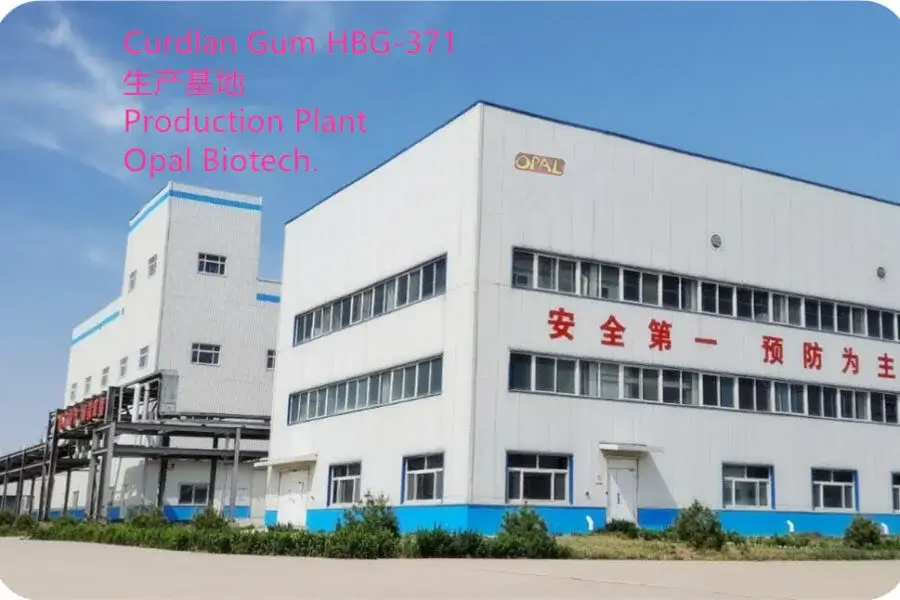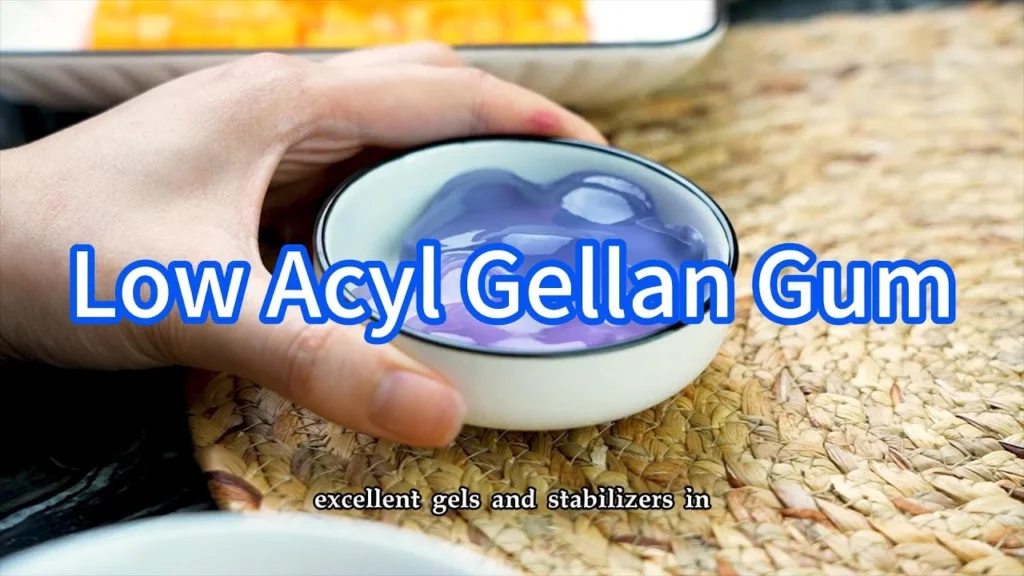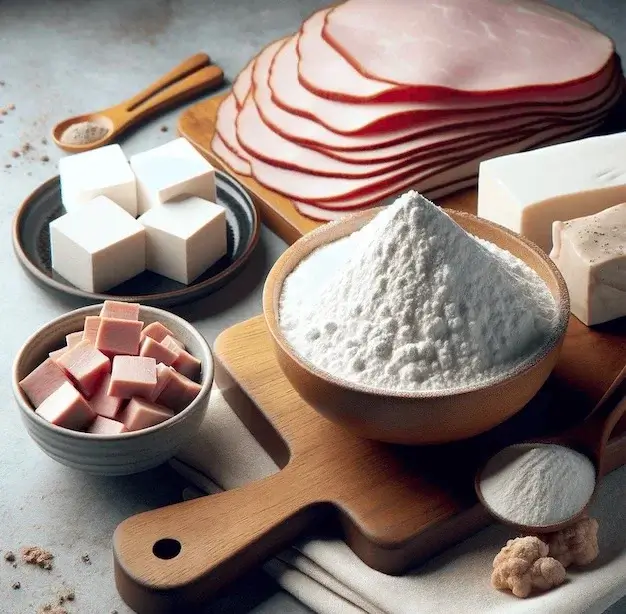When it comes to the world of gelling agents, gellan gum stands out as a versatile and powerful tool in the arsenal of food producers, pharmaceutical companies, and cosmetic manufacturers. However, not all gellan gums are created equal. The differences between low acyl gellan gum and high acyl gellan gum are not just chemical but also functional, affecting their applications and the final product’s texture and stability. This article, brought to you by Shine, a leading name among gellan gum manufacturers and suppliers, dives deep into these differences, shedding light on why choosing the right type of gellan gum can make or break your product.

The journey into the world of gellan gum begins at the molecular level. The primary distinction between low acyl and high acyl gellan gum lies in their chemical structure, which directly influences their properties. Low acyl gellan gum is known for its ability to create firm, brittle gels. This characteristic makes it a favorite among food technologists who need precise control over the texture of their products. On the other hand, high acyl gellan gum forms soft, elastic gels, which are sought after in applications where a more flexible texture is desired, such as in certain dairy products or gel-based desserts.
Shine, as one of the forefront gellan gum suppliers, emphasizes the importance of understanding these properties for selecting the right gellan gum. The application spectrum of low acyl and high acyl gellan gum in the food industry is broad. Low acyl gellan gum is often the go-to option for stabilizing beverages, creating gelled layers in multi-textured desserts, and as a vegetarian substitute for gelatin in jelly sweets. Meanwhile, high acyl gellan gum finds its place in products that require a smoother mouthfeel, like puddings, creamy spreads, and some dairy alternatives. The versatility of both forms of gellan gum opens up a world of innovation in food texture and stability.
The choice between low acyl and high acyl gellan gum ultimately comes down to the desired outcome in the final product. A comparative analysis reveals that while low acyl gellan gum offers unmatched firmness and stability, high acyl gellan gum brings elasticity and a pleasing texture to foods. This understanding is crucial for food scientists and product developers working to meet specific texture and stability requirements. Shine, with its expertise as both a gellan gum manufacturer and supplier, stands ready to guide its clients through the selection process, ensuring that the right type of gellan gum is chosen for each application.
In conclusion, the decision between low acyl and high acyl gellan gum is not just a matter of chemical preference but a strategic choice that impacts the texture, stability, and overall quality of the final product. Whether you’re stabilizing a beverage, crafting a novel dessert, or innovating in the dairy aisle, understanding the unique properties of each type of gellan gum is key. With Shine’s commitment to quality and innovation, gellan gum manufacturers and suppliers like us are here to support your journey from concept to consumer, ensuring that every product is a testament to the magic of the right gelling agent.
Introduction to Gellan Gum
Gellan Gum, a powerhouse of versatility in the realm of gelling agents, has carved its niche across a spectrum of industries – from the bustling kitchens of the food sector to the meticulous labs of pharmaceuticals, and even into the vibrant world of cosmetics. This biopolymer, a fermentation-derived ingredient, owes its popularity to its ability to provide unique textural and stability enhancements that are hard to replicate with other agents. The narrative of Gellan Gum is not just a tale of one ingredient but a story of two distinct forms – High Acyl Gellan Gum and Low Acyl Gellan Gum – each with its unique characteristics and applications.
The journey of Gellan Gum from a mere gelling agent to a key player in various industries is a testament to the innovation and research prowess of Gellan Gum manufacturers and suppliers. These entities, like Shine, have been instrumental in unlocking the potential of Gellan Gum, pushing the boundaries of its applications and making it a staple in product formulations. The distinction between High Acyl and Low Acyl Gellan Gum is not merely a matter of chemical composition but a reflection of the diverse needs and challenges across different sectors that require tailored solutions.

As we delve deeper into the world of Gellan Gum, it becomes evident that the versatility of this ingredient is unmatched. Whether it’s the firm, brittle gels that Low Acyl Gellan Gum forms, ideal for culinary creations that demand precision, or the soft, elastic textures that High Acyl Gellan Gum offers, perfect for products requiring a more flexible consistency, Gellan Gum stands out as a champion of customization. The commitment of Gellan Gum manufacturers and suppliers to quality and innovation has positioned products like Shine’s Gellan Gum at the forefront of the industry, making them go-to choices for businesses looking to elevate their product offerings.
In conclusion, the introduction of Gellan Gum into various industrial applications has been nothing short of revolutionary. Its ability to adapt and cater to the specific needs of different products and processes underscores the importance of choosing the right type of Gellan Gum. As we continue to explore the capabilities of High Acyl Gellan Gum and Low Acyl Gellan Gum, the role of leading manufacturers and suppliers in shaping the future of this versatile ingredient cannot be overstated. With entities like Shine leading the charge, the potential for innovation and application of Gellan Gum seems boundless.
Chemical Structure of Gellan Gum
The chemical structure of gellan gum, a biopolymer synthesized by the bacterium Sphingomonas elodea, is the cornerstone of its unique properties and applications. This polysaccharide consists of a repeating unit of glucose, glucuronic acid, and rhamnose. However, the presence or absence of acyl groups (glyceryl and acetyl) in its structure differentiates high acyl gellan gum from low acyl gellan gum. This difference is not just minor; it’s pivotal, influencing everything from gel texture to thermal stability.
High Acyl Gellan Gum, as supplied by leading Gellan Gum Manufacturers, retains both acetyl and glyceryl groups. This configuration lends the gum its characteristic soft and elastic gel texture. It’s this quality that makes High Acyl Gellan Gum a favorite among food producers seeking to innovate with textures that delight the senses.
On the other hand, Low Acyl Gellan Gum, which has had these acyl groups removed, forms firm and brittle gels. This variant, popular among Gellan Gum suppliers for its predictability and precision in texture control, is indispensable in applications where the exactitude of gel firmness is critical.

Understanding the chemical structure of gellan gum is not just academic; it’s a practical necessity for industries aiming to harness its properties. Shine, a brand synonymous with quality in the realm of gellan gum, emphasizes the importance of choosing the right type of gellan gum for specific applications. Whether it’s stabilizing a beverage without altering its taste or creating a dessert that surprises with its texture, the choice between high acyl and low acyl gellan gum can make all the difference.
The role of Gellan Gum Manufacturers and Gellan Gum suppliers in this ecosystem cannot be overstated. They not only provide the raw material but also the technical expertise and application support that enable food producers, pharmaceutical companies, and cosmetic brands to innovate confidently. Shine, with its commitment to quality and innovation, stands out as a leader in this field, guiding its clients towards the best gellan gum solutions for their needs.
In conclusion, the chemical structure of gellan gum is a fascinating study of how small changes at the molecular level can have significant impacts on the physical properties of the resulting gels. Whether it’s the soft, elastic gels favored in culinary applications or the firm, brittle gels required in industrial settings, the choice between high acyl and low acyl gellan gum is critical. With the expertise of Shine and other key players in the industry, the potential of gellan gum continues to expand, opening up new possibilities across a range of applications.
Properties of Low Acyl Gellan Gum
Low Acyl Gellan Gum, a product that has significantly revolutionized the food industry, pharmaceuticals, and cosmetics, is a shining example of innovation in the world of gelling agents. Manufactured by leading Gellan Gum manufacturers, this variant of Gellan Gum is distinguished by its unique chemical structure, which allows it to create firm, brittle gels. Unlike its counterpart, High Acyl Gellan Gum, which forms soft, elastic gels, Low Acyl Gellan Gum is celebrated for its remarkable ability to provide precise texture control, a feature highly sought after by food technologists and product developers across various industries.
The properties of Low Acyl Gellan Gum extend beyond its texture-enhancing capabilities. It is known for its excellent thermal stability and gel clarity, making it an indispensable ingredient in the creation of a wide range of products. From the perspective of Gellan Gum suppliers, the demand for Low Acyl Gellan Gum underscores its versatility and effectiveness in meeting the exacting standards of today’s food and beverage, pharmaceutical, and cosmetic formulations.

One of the key attributes of Low Acyl Gellan Gum is its ability to form gels at relatively low concentrations, which not only contributes to cost-effectiveness but also ensures a clean label, a factor increasingly important to health-conscious consumers. Moreover, its compatibility with a wide range of ingredients and its ability to withstand various processing conditions such as pasteurization and sterilization make it a preferred choice among Gellan Gum manufacturers.
In the realm of food production, Low Acyl Gellan Gum shines particularly in applications where clarity and rigidity are paramount. It is extensively used in the manufacturing of jellies, icings, and as a stabilizer in beverages, where it prevents the separation of suspended particles, ensuring a uniform product from the first sip to the last. The pharmaceutical industry also benefits from its unique properties, utilizing it in encapsulated formulations for controlled release of medication, thereby enhancing efficacy and patient compliance.
In conclusion, the properties of Low Acyl Gellan Gum, ranging from its gel strength and clarity to its thermal stability and compatibility with various ingredients, make it a standout ingredient in the arsenal of Gellan Gum suppliers and manufacturers. Its ability to meet the rigorous demands of diverse applications underscores its importance and versatility in the industries it serves. As we continue to explore and understand the full potential of Low Acyl Gellan Gum, it is clear that its role in shaping the future of food technology, pharmaceuticals, and cosmetics is just beginning to unfold.
Properties of High Acyl Gellan Gum
When it comes to the versatile world of gelling agents, high acyl gellan gum stands out for its unique properties, which make it a preferred choice among Gellan Gum Manufacturers and Gellan Gum suppliers. This variant of gellan gum, unlike its low acyl counterpart, offers a distinctive soft and elastic gel formation, which is highly sought after in numerous applications. The magic behind high acyl gellan gum lies in its chemical structure, which allows it to provide a more flexible and less brittle texture. This is particularly advantageous in industries where the tactile experience is as important as the visual appeal.

One of the remarkable attributes of high acyl gellan gum is its ability to retain water, which contributes to its superior moisture retention capabilities. This property is a boon for the food industry, where maintaining the moisture content of products is crucial for preserving freshness and extending shelf life. Furthermore, high acyl gellan gum exhibits excellent solubility in hot water, which simplifies the manufacturing process, making it a favorite among Shine and other leading brands in the sector.
The thermal stability of high acyl gellan gum is another key feature that sets it apart. Unlike many other gelling agents that might degrade or lose their gelling power at high temperatures, high acyl gellan gum maintains its integrity, making it ideal for applications that require sterilization or pasteurization. This aspect is particularly beneficial for the production of canned goods, where high temperatures are used to ensure food safety.
In addition to its technical advantages, the sensory properties of high acyl gellan gum cannot be overlooked. It contributes to a smooth and pleasing mouthfeel, enhancing the consumer experience. This makes it an invaluable ingredient in the creation of premium desserts, jellies, and dairy products, where texture plays a crucial role in consumer satisfaction.
Given its versatile and desirable properties, it’s no surprise that Shine, among other Gellan Gum Manufacturers and Gellan Gum suppliers, opts for high acyl gellan gum in a wide range of applications. From stabilizing beverages to innovating dessert textures, high acyl gellan gum is a key ingredient that helps in achieving the perfect balance of texture, stability, and aesthetics in food products.
In conclusion, the properties of high acyl gellan gum make it an indispensable tool in the arsenal of food scientists and product developers. Its ability to form soft, elastic gels, combined with its moisture retention, solubility, and thermal stability, offers a wide range of possibilities for innovation in food texture and quality. As the demand for more sophisticated and high-quality food products continues to grow, the role of high acyl gellan gum is set to become even more significant.
Applications in the Food Industry
The food industry, always on the lookout for ingredients that Shine in terms of quality and functionality, has embraced both High Acyl Gellan Gum and Low Acyl Gellan Gum for their distinctive properties. These ingredients, sourced from leading Gellan Gum Manufacturers and Gellan Gum suppliers, have revolutionized food production by offering unparalleled texture and stability enhancements. The versatility of gellan gum allows food technologists to innovate and create products that meet the evolving preferences of consumers.
Low Acyl Gellan Gum is prized for its ability to create firm, brittle gels, which has made it a staple in the production of structured yet delicate foods. Imagine the perfect jelly that holds its shape without crumbling – that’s Low Acyl Gellan Gum at work. Its application extends to dairy products, where it prevents the separation of ingredients, ensuring a uniform texture in products like yogurt and cream cheese. Furthermore, it’s a key player in the world of confectionery, providing the ideal texture for gummy candies and jelly desserts that require precise bite and clarity.

On the other hand, High Acyl Gellan Gum, with its capacity to form soft, elastic gels, is a favorite in applications demanding a more flexible texture. This variant of gellan gum shines in beverages, acting as a stabilizer to suspend particles in plant-based milks, juices, and teas, enhancing the consumer’s sensory experience. Additionally, its use in desserts, such as mousses and puddings, allows for a creamy, indulgent texture that’s both stable and visually appealing.
The collaboration between Gellan Gum Manufacturers and food producers has led to the development of innovative products that cater to the dietary and aesthetic preferences of today’s consumers. For instance, the use of gellan gum in plant-based and gluten-free products has opened up new possibilities for texture and stability without compromising on taste or nutritional value.
Moreover, the adaptability of gellan gum to various pH levels and temperatures makes it a preferred choice in complex food systems, such as soups and sauces, where it ensures consistency and longevity. This adaptability, coupled with the expertise of Gellan Gum suppliers, enables food companies to maintain high standards of quality and safety in their products.
In conclusion, the applications of High Acyl Gellan Gum and Low Acyl Gellan Gum in the food industry are a testament to their functionality and the innovation they bring to food production. Whether it’s creating the perfect texture in a dessert or ensuring the stability of a beverage, these gelling agents continue to play a pivotal role in the development of food products that not only meet but exceed consumer expectations. The collaboration between food technologists and Gellan Gum Manufacturers and suppliers ensures that the industry remains at the forefront of ingredient technology, making every dining experience a delightful surprise.
Comparative Analysis and Conclusion
When it comes to choosing between low acyl gellan gum and high acyl gellan gum, the decision largely hinges on the specific requirements of the application at hand. Both variants of gellan gum, supplied by leading gellan gum manufacturers and suppliers, including the renowned brand Shine, offer distinctive properties that can significantly impact the texture, stability, and appearance of the final product. Understanding these differences is key to optimizing product formulations across various industries.
Low acyl gellan gum is celebrated for its ability to form firm, brittle gels. This characteristic makes it an excellent choice for products that require precise texture control, such as jellies and structured desserts. Its gelation properties are so specific that it allows food technologists to sculpt textures that are simply not possible with other gelling agents. On the other hand, high acyl gellan gum is known for producing soft, elastic gels. This flexibility is particularly advantageous in applications where a tender and chewy texture is desired, such as in some dairy products and plant-based meat alternatives. The choice between low and high acyl forms, therefore, depends on whether a firm or a soft gel texture is desired in the final product.

From an industrial perspective, the versatility of gellan gum, sourced from top-tier gellan gum suppliers and manufacturers like Shine, makes it a valuable ingredient in the food production sector. For instance, low acyl gellan gum is indispensable in the creation of stable, clear gels that do not interfere with the aesthetic appeal of beverages and edible decorations. Meanwhile, high acyl gellan gum is often the go-to option for products requiring a smooth, palatable texture, such as puddings and sauces.
The comparative analysis of low acyl and high acyl gellan gum underscores the importance of understanding their unique properties to make informed decisions. Both variants have their place in the food industry, guided by the texture and stability requirements of the product. Shine, as a leading brand among gellan gum manufacturers and suppliers, stands at the forefront of providing high-quality gellan gum variants tailored to meet the diverse needs of its clientele. The choice between low acyl and high acyl gellan gum ultimately depends on the specific demands of the application, with each type offering distinct advantages that can enhance product quality and consumer satisfaction.
Frequently Asked Questions
- What exactly is Gellan Gum?Gellan gum is a powerhouse of a gelling agent that’s found its way into everything from your jiggly desserts to the cosmetics you swear by. It’s a microbial polysaccharide that, depending on how it’s treated, can give you either a firm, brittle gel or a soft, elastic one. Think of it as the secret ingredient that gives your foods and products that perfect texture and consistency.
- How do Low Acyl and High Acyl Gellan Gum differ?Picture this: low acyl gellan gum is like that friend who’s always precise and firm, perfect for when you need your culinary creations to hold their shape with military precision. High acyl gellan gum, on the other hand, is the life of the party, bringing flexibility and bounce to the table, ideal for when you want a softer, more forgiving texture. The difference lies in their chemical makeup, which dictates whether you’ll get a firm, brittle gel or a soft, elastic one.
- Can you use both types of Gellan Gum in food?Absolutely! Both low acyl and high acyl gellan gums have their VIP pass to the food industry. Low acyl gellan gum steps in when you need to create those perfect, Instagram-worthy structured desserts or stabilize beverages. High acyl gellan gum, with its softer, more elastic gel, is your go-to for creating everything from soft, spreadable cheese to those innovative textures in desserts that make you go “Wow!”. The key is knowing which one to invite to your kitchen party based on the texture you’re aiming for.
- Why is understanding the chemical structure of Gellan Gum important?Getting to know the chemical structure of gellan gum is like unlocking a treasure chest of possibilities. It’s the difference between creating a culinary masterpiece and a kitchen disaster. Understanding whether you’re working with low acyl or high acyl gellan gum lets you predict how it will behave in your product. Will it be firm and hold its shape, or will it be soft and elastic? This knowledge is crucial, especially in industries where texture and consistency are everything.
- Where else is Gellan Gum used apart from the food industry?Think beyond the plate! Gellan gum’s talents are not confined to the kitchen. In the pharmaceutical world, it’s used to encapsulate medicines, ensuring they deliver their therapeutic effect exactly where needed. In cosmetics, it helps maintain the perfect consistency of creams and lotions. It’s even used in the production of some plant-based milks, acting as a stabilizer to prevent separation. Gellan gum is a versatile ingredient that crosses industry boundaries with ease.
